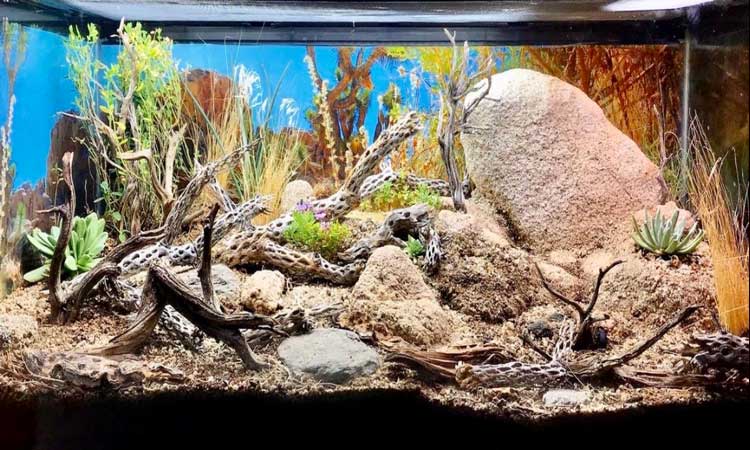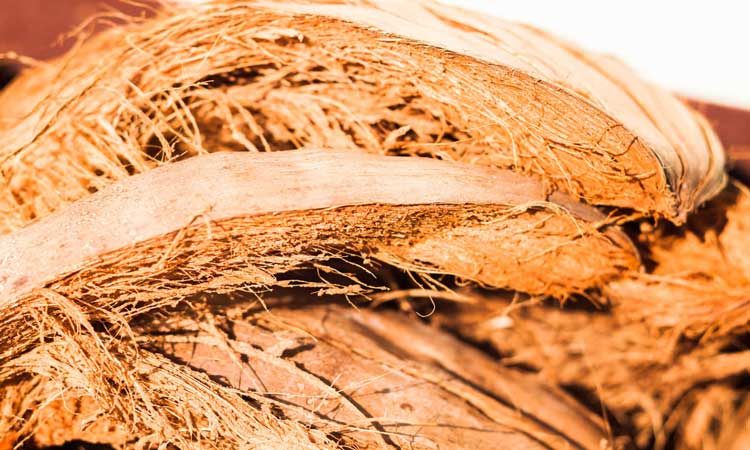Introduction to Snake Habitats
A snake habitat is a crucial aspect of its overall health and well-being. It is important to provide a comfortable and safe environment that meets all of its physical and behavioral needs. A proper habitat should provide the right temperature, humidity, and lighting, as well as offer plenty of space for your snake to move and explore. A well-designed snake habitat should also include hiding places, furniture, and decorations to create a comfortable and natural environment. Additionally, it is important to choose the right type of enclosure, such as an aquarium, terrarium, or cage, to ensure that your snake has enough space to move around freely. Overall, a well-designed habitat is essential for keeping your snake healthy, happy, and active.
Determining the Right Size for Your Snake’s Habitat
When setting up a habitat for your snake, size is a crucial consideration. Snakes need enough space to move, explore, and be active, but also enough room to feel secure. As a general rule, the enclosure should be long enough to allow your snake to stretch out fully, and wide enough to provide ample space for it to move around. Snakes also need adequate hiding places, so the enclosure should be deep enough to accommodate these spaces. In general, the larger the enclosure, the better it is for your snake, as long as it is still able to regulate its temperature and humidity effectively. It is important to research the specific requirements of your snake’s breed and size to determine the right size of enclosure for its habitat.
Choosing the Right Type of Enclosure

When setting up a snake habitat, choosing the right type of enclosure is essential. There are several options available, including aquariums, terrariums, and cages, each with its own advantages and disadvantages.
Aquariums are a popular option, as they provide a clear view of your snake and are relatively easy to clean. However, they may not be the best option for snakes that require higher humidity levels, as they do not have proper ventilation.
Terrariums, on the other hand, provide adequate ventilation and allow for temperature and humidity control. They also offer a natural environment with features like plants and hiding places.
Cages are easily modified to meet the specific requirements of your snake, but they may not be as visually appealing as other options.
When choosing a type of enclosure, it is important to consider the size, temperature, and humidity needs of your snake, as well as your personal preferences. Researching the appropriate size of the enclosure is also crucial, taking into account the length and width of your snake and its overall size.
Ultimately, the type of enclosure you choose should provide a safe, secure, and comfortable home for your pet snake.
Providing Proper Lighting and Heating
Proper lighting and heating are critical for maintaining the health and well-being of pet snakes. Snakes require a basking area with a heat source, as well as a cooler area in their enclosure. The basking area should reach a temperature of 90-100°F, while the cooler area should be kept between 70-75°F.
A heat lamp or ceramic heat emitter can be used to provide heat, while a thermometer can be used to monitor the temperature. It is important to place the heat source in such a way that your snake can move freely between the warm and cool areas of the enclosure.
In addition to heating, snakes also require proper lighting to regulate their circadian rhythm. This can be achieved by using a fluorescent bulb or natural sunlight. It is important to provide a light cycle that mimics their natural habitat, with around 12-14 hours of light and 10-12 hours of darkness each day.
Proper lighting and heating are essential for maintaining the health and well-being of your pet snake, so it is important to ensure that the habitat is set up correctly and that the temperature and lighting conditions are monitored regularly.
Creating a Natural and Comfortable Substrate

The substrate you choose for your snake’s habitat can greatly affect its comfort and well-being. A substrate provides a place for your snake to burrow and hide, which helps to reduce stress and promote good health.
Popular substrates for snake habitats include coconut coir, aspen shavings, and cypress mulch. These materials are absorbent, provide good insulation, and are easy to clean. It is important to avoid substrates that can be easily ingested, such as gravel, as this can lead to health problems.
When choosing a substrate, it is also important to consider the size of your snake. Larger species will require a deeper substrate, while smaller species can be kept on a shallow layer.
In addition to choosing a suitable substrate, it is also important to keep the enclosure clean and fresh. This can be done by removing any soiled substrate on a regular basis and replacing it with fresh substrate.
A natural and comfortable substrate is essential for providing a healthy and stress-free environment for your pet snake, so be sure to choose the right substrate for your snake and keep their habitat clean and fresh.
Adding Decorations, Furniture, and Hiding Places
Decorations, furniture, and hiding places are important elements of a snake habitat as they provide your snake with opportunities for exploration and stimulation. Decorations can also help to create a natural and visually appealing environment for your snake.
Hiding places such as caves, boxes, or tubes provide your snake with a place to retreat and feel secure. This can be especially important for shy or stressed snakes. Furniture such as branches, rocks, and climbing structures can also provide a fun and challenging environment for your snake to explore and play.
When choosing decorations and furniture, it is important to consider the size and species of your snake. Some decorations may not be suitable for larger snakes, while some furniture may be too small for larger species.
It is also important to keep the habitat safe and free from potential hazards. Sharp edges, toxic materials, and loose or unstable structures should be avoided.
By adding decorations, furniture, and hiding places to your snake habitat, you can create an exciting and stimulating environment for your pet snake, which can help to promote their physical and mental well-being.
Maintaining Appropriate Humidity Levels
Humidity levels play a crucial role in the health and well-being of pet snakes. Many species of snakes require specific levels of humidity to maintain their skin and respiratory health, regulate their body temperature, and promote shedding.
To maintain appropriate humidity levels, it is important to regularly monitor the habitat using a hygrometer. You can adjust the humidity levels by using a misting bottle, adding a water dish, or by using a substrate that helps to retain moisture.
Some species, such as tropical snake species, require higher humidity levels and may need to be misted several times a day. On the other hand, arid-dwelling species, such as desert snakes, require lower humidity levels and may need a larger water dish to help regulate their body temperature.
It is important to remember that too much humidity can lead to respiratory issues, skin infections, and other health problems. On the other hand, too little humidity can cause problems with shedding, dehydration, and other health concerns.
By maintaining appropriate humidity levels in your snake habitat, you can help to keep your pet snake healthy and comfortable.
Setting Up a Proper Feeding and Watering Area
Having a proper feeding and watering area is important for the health and well-being of your pet snake. Snakes require a clean and safe area to eat and drink, as well as a place to soak or bathe if necessary.
When setting up the feeding area, it is important to use a dish that is large enough to accommodate the size of your snake, but not so large that it becomes a breeding ground for bacteria. A water dish should also be provided and cleaned regularly to prevent bacterial growth and to ensure that your snake has access to clean drinking water at all times.
In addition to providing a feeding and watering area, it is also important to consider the type of food that you will be feeding your snake. Some snakes require live prey, while others may be fed frozen or thawed prey items.
When feeding your snake, it is important to observe its behavior and make any necessary adjustments to its diet. Overfeeding can lead to obesity and other health problems, while underfeeding can lead to malnutrition and other health concerns.
By setting up a proper feeding and watering area, you can help to ensure that your pet snake receives the proper nutrition and hydration necessary for optimal health and well-being.
Regular Cleaning and Maintenance of the Habitat
Regular cleaning and maintenance of your pet snake’s habitat is important to ensure that they remain healthy and comfortable. A dirty and unsanitary habitat can lead to health problems and stress for your snake, as well as attract unwanted pests.
It is recommended to clean the habitat at least once a week, depending on the size of the enclosure and the number of snakes housed in it. During a cleaning, the substrate should be replaced and the enclosure should be thoroughly cleaned and disinfected.
In addition to regular cleaning, it is also important to check and maintain the heating and lighting systems, as well as the water dish and other elements of the habitat.
Regular maintenance also includes monitoring the humidity levels, as well as checking for any signs of damage or wear in the enclosure or its components.
By following a regular cleaning and maintenance schedule, you can help to ensure that your pet snake’s habitat remains healthy and comfortable and that your snake remains healthy and happy.
Tips for Making the Habitat Safe and Secure for Your Snake
1. Ensuring the safety and security of your pet snake’s habitat is crucial to their health and well-being. Here are some tips to help you create a safe and secure environment for your snake:
2. Secure the lid or top of the enclosure to prevent escape.
3. Avoid using loose or sharp objects in the habitat that could harm your snake.
4. Place the enclosure in a location that is free from potential hazards, such as direct sunlight or areas with excessive heat or cold.
5. Avoid overcrowding the habitat, as this can cause stress for your snake.
6. Ensure that the habitat is not accessible to children or other pets that could harm your snake.
7. Avoid using any toxic materials in the habitat, such as cleaning products or plants.
8. Regularly check the habitat for any signs of damage or wear, and repair or replace as needed.
9. By following these tips, you can help to create a safe and secure environment for your pet snake and help to ensure their health and well-being.
Conclusion
In conclusion, setting up the perfect snake habitat is crucial for the health and well-being of your pet snake. By following the guidelines outlined above, you can ensure that your snake has a comfortable and safe place to live. By providing the right size and type of enclosure, proper lighting and heating, a comfortable substrate, and a secure and safe environment, you can help your snake thrive and enjoy a happy and healthy life. Remember, the better you take care of your snake’s habitat, the better they will take care of themselves.

